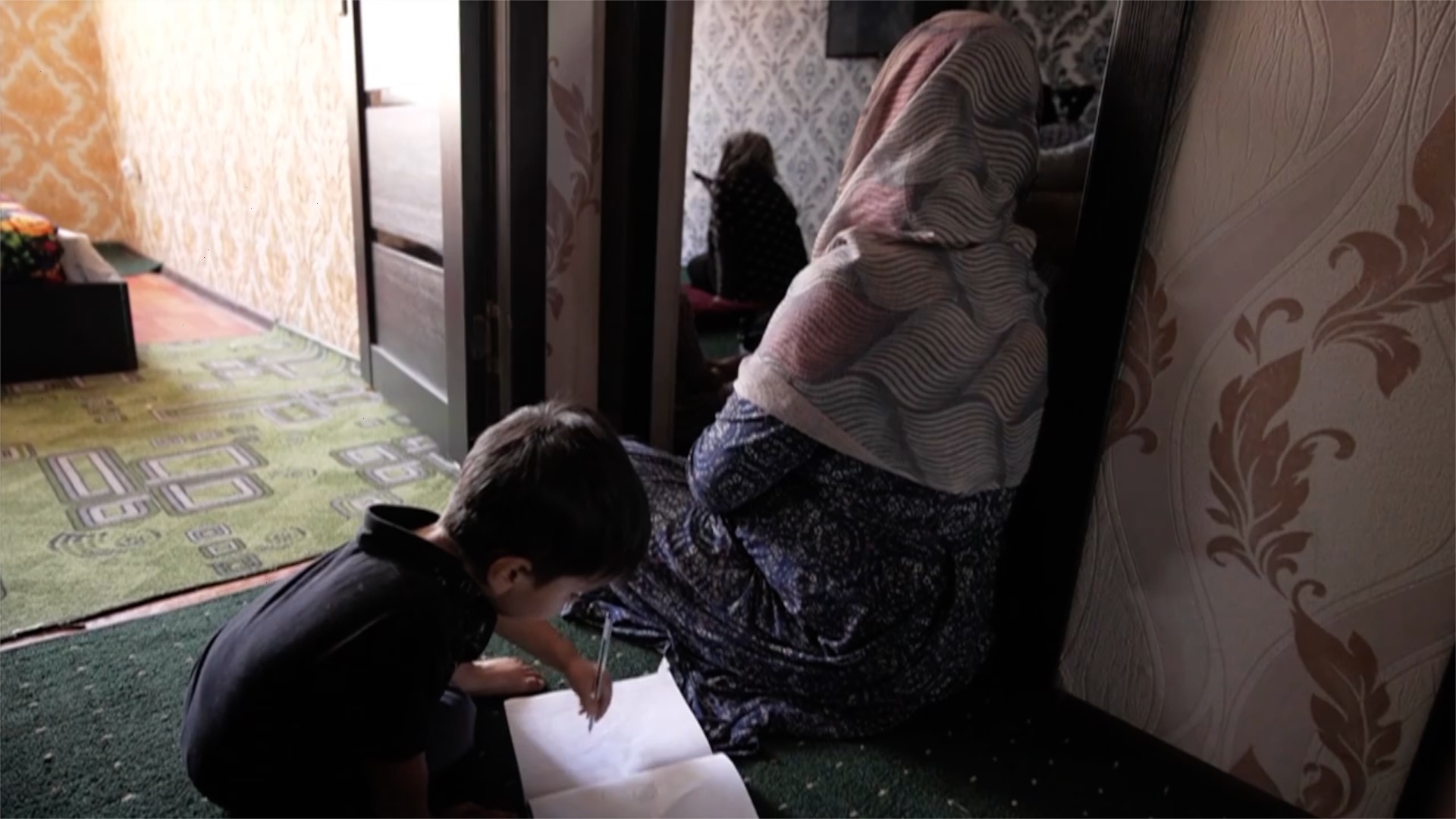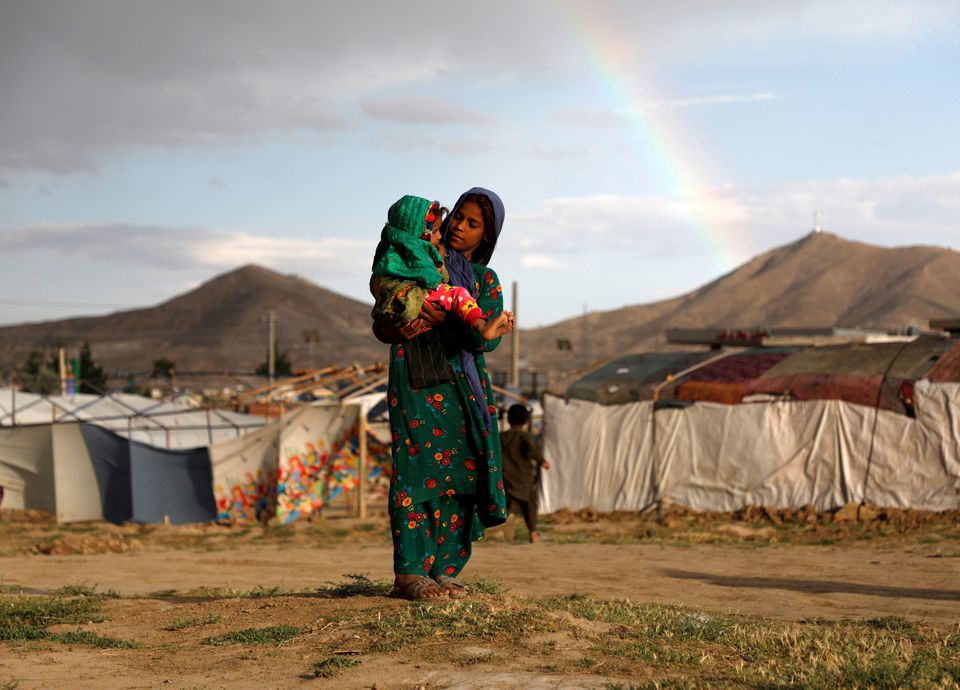02:28

Around 6,000 Afghan refugees are in neighboring Tajikistan. At least that's what the official data says. But experts think the number is much higher, following the recent withdrawal of U.S. and NATO forces.
Although Tajikistan says it's preparing for more people to cross the border, its officials claim they cannot cope with the significant numbers some suggest might come.
To check how those who already sought refuge in Tajikistan live there, CGTN reporters went to an outskirt of the capital Dushanbe. CGTN met, in a very modest rented apartment, a young Afghani woman, let's call her Mahei, as she asked us to hide her identity.
In a living room which doubles as the second bedroom was her son, 3-year-old Ahmat, sitting on the floor and chewing a piece of Styrofoam. He thought it was food, a rare commodity to him these days. His sister, 7-year-old Fatma, was sitting behind him, quietly weeping over how her life had turned upside down in a matter of days.
Mahei was on the internet, speaking with relatives in hiding in Herat. A male voice on the other side of the line was describing what's happening there, "The situation is bad. What can you say? We took a chance and visited an acquaintance. One of my employees, a woman who wanted to escape, went to Kabul. Now, she's stuck there. She could not fly out. Poor thing."

An internally displaced Afghan girl carries a child near their shelter at a camp on the outskirts of Kabul, Afghanistan, June 20, 2019. /Reuters
An internally displaced Afghan girl carries a child near their shelter at a camp on the outskirts of Kabul, Afghanistan, June 20, 2019. /Reuters
Mahei fled some two weeks ago from Herat over Uzbekistan to Tajikistan with her mother and three children.
She told the reporters that her husband was assassinated six months ago, and the Taliban were threatening her. So she escaped, leaving the rest of her family behind in hiding. When reaching Tajikistan, she had to find private accommodation for five of them, as there are no available camps for the refugees there.
"We rent this apartment for $130 a month. It's insanely expensive for us! I'm looking for a job, but I have three children. The youngest is only 2-years-old." Mahei told CGTN. "My mother is sick. You need a lot of money for clothes, food, housing, school. We will cope with economic difficulties, but how can we cope with psychological ones?”
And her story is just one of the thousands of similar tales here in Tajikistan – stories of people who can't go back to their homeland and can barely survive here, with poor chances of leaving for a third country. Most Afghans who've fled to Tajikistan say they are thankful to authorities for giving them refuge. But they also say they want to leave as soon as possible, Abdul Bahadori, president of the Association of Afghan Refugees in Tajikistan, told CGTN.
"There is very little work here, so refugees want to go to third countries. You know, 60 percent of young people from Tajikistan work in Russia. And refugees are looking for a better life in Europe or America. So many want to leave for their children's futures." Abdul added.
If lucky, Mahei will be granted asylum in a Western country, 18 to 20 months from now.

